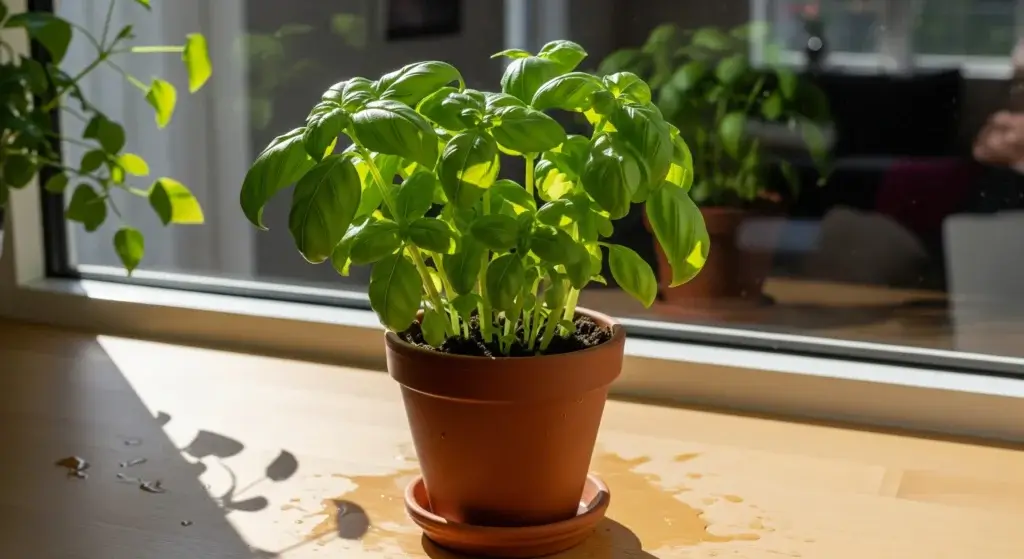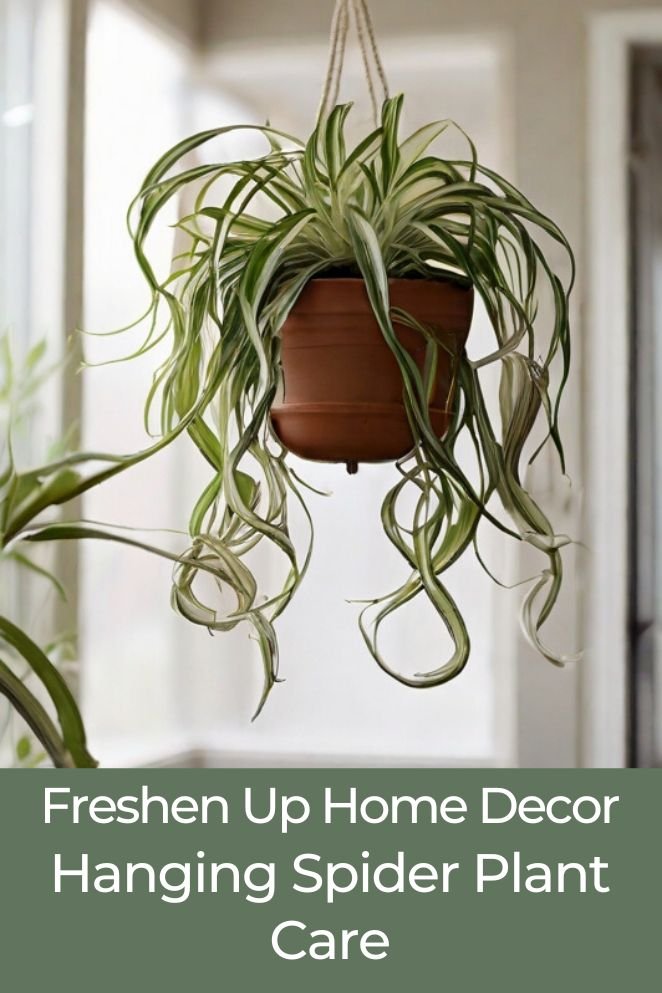
If you’re looking to add a touch of greenery to your home, spider plants are an excellent choice.
Known for their long, arched foliage and air-purifying properties, these plants are not only visually appealing but also relatively low-maintenance.
In this blog post, we’ll explore the benefits of growing spider plants in hanging containers and provide valuable care tips to help you keep your spider plant healthy and thriving.
Hanging Spider Plant Care Tips
Watering and lighting
Spider plants are relatively easy to care for, making them an ideal choice for both beginner and experienced plant enthusiasts.
When it comes to watering, it’s essential to maintain a consistent watering schedule, allowing the soil to dry out between waterings.
Overwatering can lead to root rot, so it’s best to err on the side of underwatering rather than overwatering.
As for lighting, spider plants prefer bright, indirect light but can also tolerate lower light conditions.
Avoid placing them in direct sunlight, as this can scorch their leaves.
- Read also: Unraveling the Mystery of Spider Plant Soil Type
- Read also: The Secrets of the Perfect Spider Plant Soil Mix
Maintenance and propagation
In addition to watering and lighting, spider plants benefit from regular fertilization during the growing season.
A balanced, water-soluble fertilizer can be applied at half strength every two to four weeks.
These plants also thrive in humid environments, so consider misting them occasionally or placing them near a humidifier.
One of the most exciting aspects of spider plants is their ability to produce “pups,” or baby spider plants, which can be repotted and shared with friends and family.
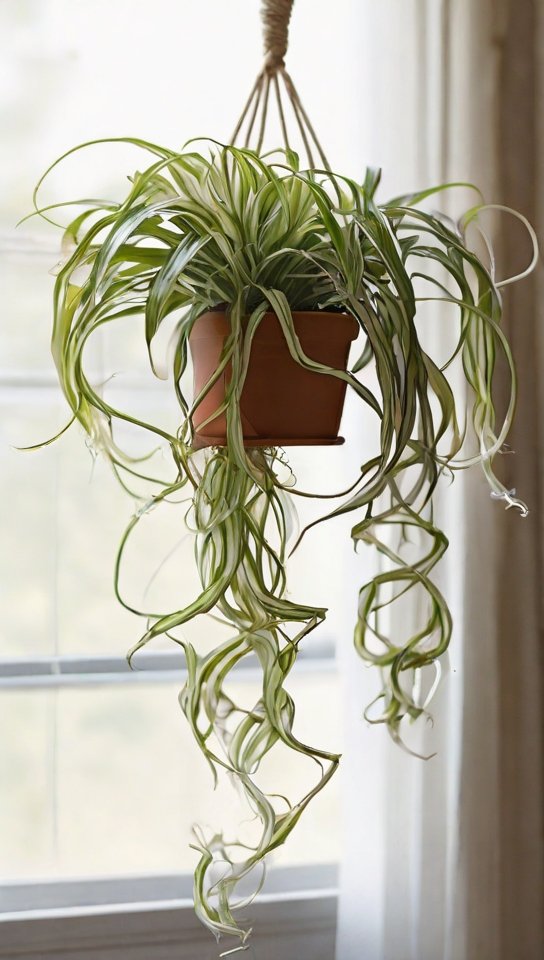
Common Mistakes to Avoid When Caring For a Hanging Spider Plant
To ensure the optimal health and thriving growth of your hanging spider plant, steer clear of these common mistakes:
Inadequate light
Spider plants crave bright indirect light.
Hanging them too high or placing them in an area lacking sufficient sunlight can impede their growth.
Ensure they have a clear view of the sun through a nearby window to meet their light requirements.
Overwatering
While spider plants can endure short periods without water, consistent watering is key to their flourishing.
Avoid overwatering, which can lead to root rot.
Check the soil’s moisture level before watering and adjust your schedule accordingly to strike the right balance.
Incorrect fertilization
Refrain from fertilizing spider plants during winter or using an excess of nitrogen, as this can result in bacterial root rot.
Stick to a balanced, water-soluble fertilizer applied at half strength every two to four weeks during the growing season for optimal nourishment.
Insufficient humidity
Spider plants thrive in humid environments.
Combat dryness by occasionally misting them or placing them near a humidifier. Brown leaf tips may indicate a need for increased humidity or a reduction in direct sunlight exposure.
Root-bound issues
When spider plants become root-bound, water storage diminishes, leading to a dry root ball.
Prevent this by repotting root-bound plants, ensuring a healthy environment for sustained growth.
Inconsistent watering
Both underwatering and overwatering can pose problems for spider plants.
Wilted and brown leaves may signify underwatering, while overly moist soil can lead to issues as well.
Assess soil moisture by touching it before deciding to water it, maintaining a careful balance.
Exposure to drafts
Protect your spider plant from exposure to drafts, especially air vents, as direct airflow can cause temperature and humidity fluctuations.
Consistent environmental conditions contribute to a stable and thriving plant.
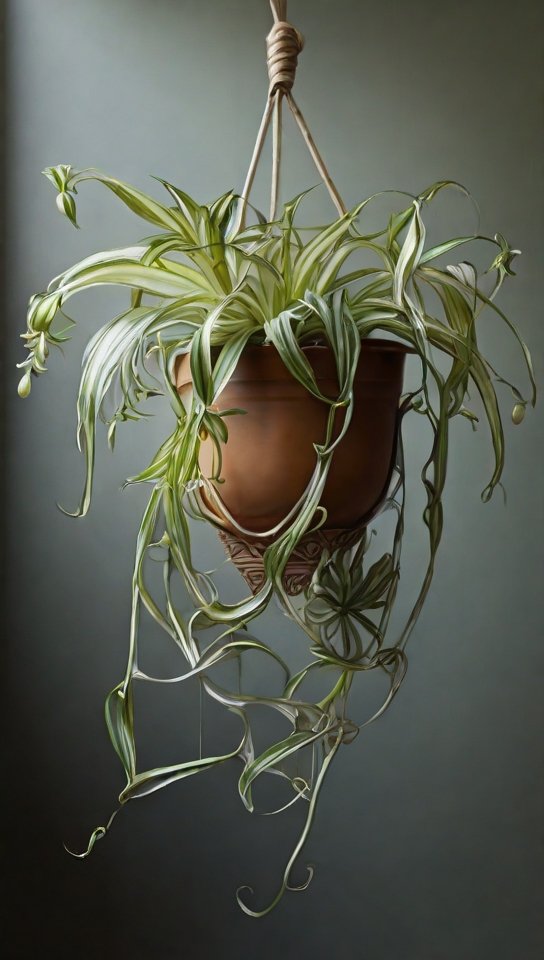
Benefits of Growing Spider Plants in Hanging Containers
Cultivating spider plants in hanging containers offers a multitude of advantages, turning them into a practical and visually appealing addition to your living space.
Let’s delve into the details of the benefits:
Striking visual display
The cascading leaves of spider plants create a captivating and visually striking display.
Hanging containers elevate the aesthetic appeal, allowing the foliage to gracefully drape downwards.
This not only adds a touch of greenery but also introduces a dynamic visual element to your home decor.
Air-purifying properties
Spider plants are renowned for their air-purifying capabilities.
Placing them in hanging containers not only enhances their decorative aspect but also maximizes their functionality.
The abundant foliage efficiently captures and filters airborne pollutants, contributing to improved indoor air quality.
This dual role makes them an excellent choice for both beauty and practicality in your living space.
Space-saving solution
Hanging spider plants offer a clever space-saving solution.
Their suspended nature eliminates the need for floor or shelf space, making them particularly well-suited for small living areas or places with limited floor space.
This versatility allows you to enjoy the benefits of greenery without compromising on precious living space.
- Read also: How To Propagate Spider Plant In Water
- Read also: Brown Tips For Healthy Spider Plants
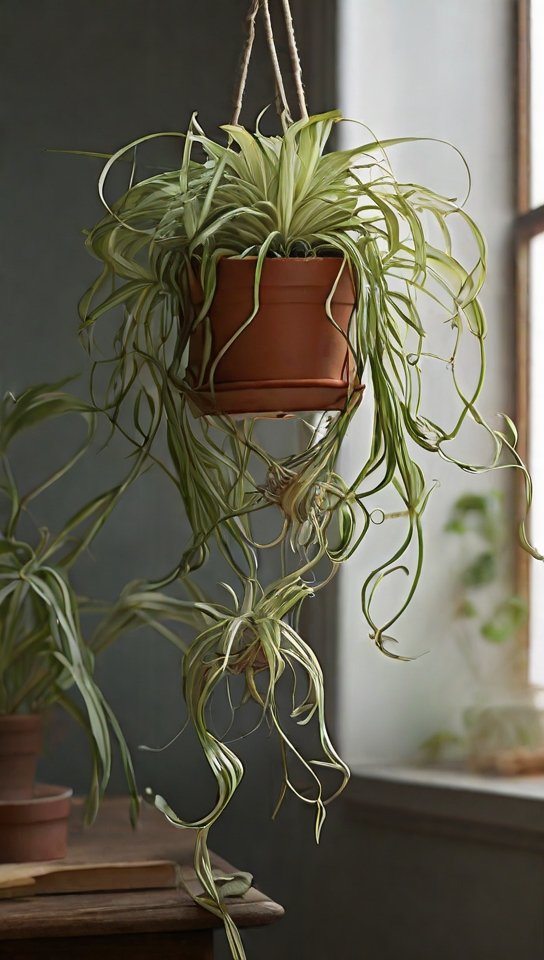
Conclusion
Spider plants are a versatile and visually appealing addition to any home.
By following the care tips outlined in this blog post, you can ensure that your hanging spider plant remains healthy and vibrant.
Whether you’re a seasoned plant enthusiast or a beginner, spider plants are an excellent choice for adding a touch of nature to your living space.
With their air-purifying properties and relatively low-maintenance care requirements, they are sure to freshen up your home decor and bring a sense of tranquility to your surroundings.



